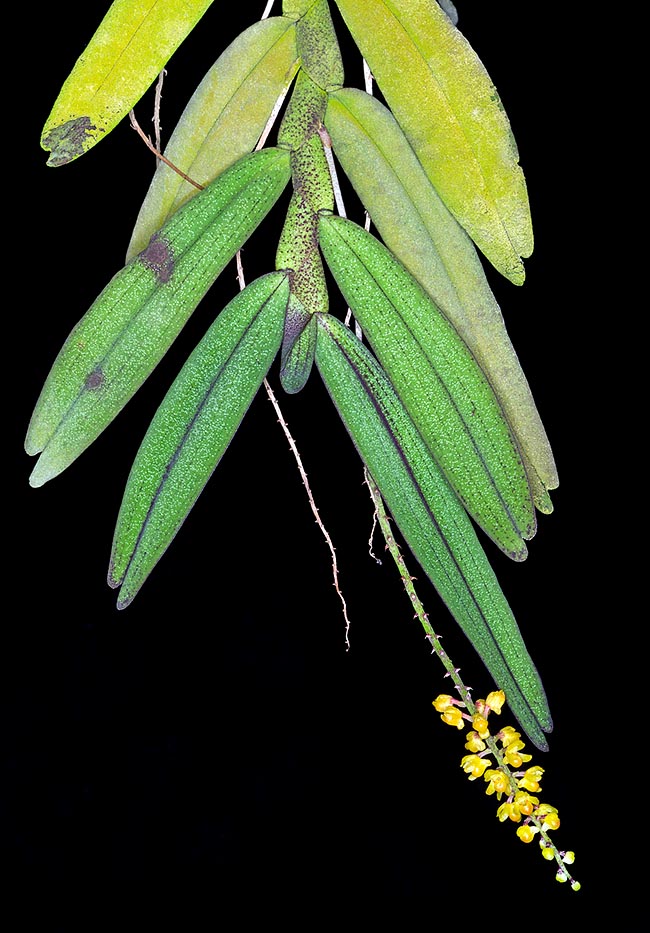Family : Orchidaceae

Text © Pietro Puccio

English translation by Mario Beltramini

The Robiquetia bicruris is an epiphyte with flat drooping stems of Sulawesi humid forests © Giuseppe Mazza
The genus is honoured to the French chemist Pierre Jean Robiquet (1780-1840), known for having identified in the plants several chemical compounds, among which asparagine, caffeine and codeine; the specific name is the combination of the Latin adverb “bis” = twice and of the substantive “crus, uris” = leg, of unclear reference.
The Robiquetia bicruris J.J.Sm. (1928) is an epiphytic species with rather flat and drooping stems, 15-25 cm long, provided of alternate leaves, distichous, oblong with irregularly bilobed apex, 4-7,5 cm long an d 1-1,4 cm broad, coriaceous.
Racemose lateral inflorescences, 10-18 cm long, bearing a multitude of tiny flowers, of about 6 mm of diameter, of yellow colour with labellum slightly suffused of purple.
Elliptic dorsal sepal with obtuse apex, concave, about 2,5 mm long and 1,5 mm broad, falcate lateral sepals, about 2,5 mm long and 1 mm broad, elliptic petals, 2 mm long and 1 mm broad, saccate trilobed labellum provided of a sort of spur at the base, 4,5 mm long and 2,5 mm broad, and 2 mm long column.
It reproduces by seed, in vitro, and by division.
Miniature orchid fairly rare in cultivation, requires a semi-shady exposition, medium-high temperatures, high humidity and constant ventilation.
Regular waterings during the growth period, slightly more spaced during the vegetative stasis, utilizing rain water, demineralized or by reverse osmosis.
Due to the drooping posture it is usually mounted on trunks, pieces of bark or rafts of cork or of roots of arborescent ferns with sphagnum at the base to maintain the humidity. Eventual transplants are to be done at the vegetative restart.

Odd 4-7,5 cm leaves with irregularly bilobed apex. Drooping 10-18 cm inflorescences with a multitude of tiny flowers, of about 6 mm of diameter © Giuseppe Mazza
→ For general notions about ORCHIDACEAE please click here.
